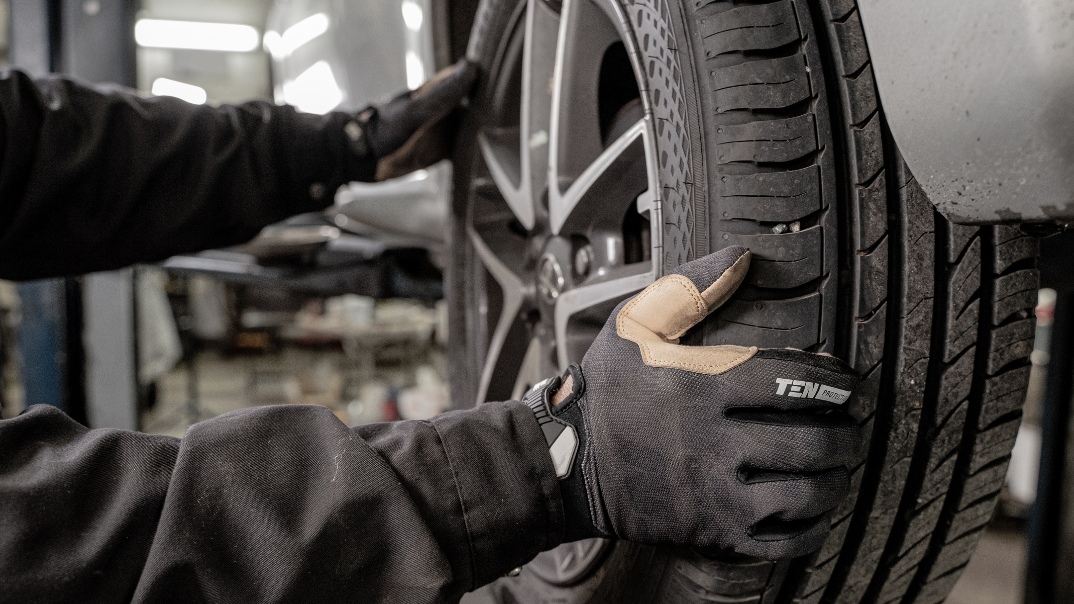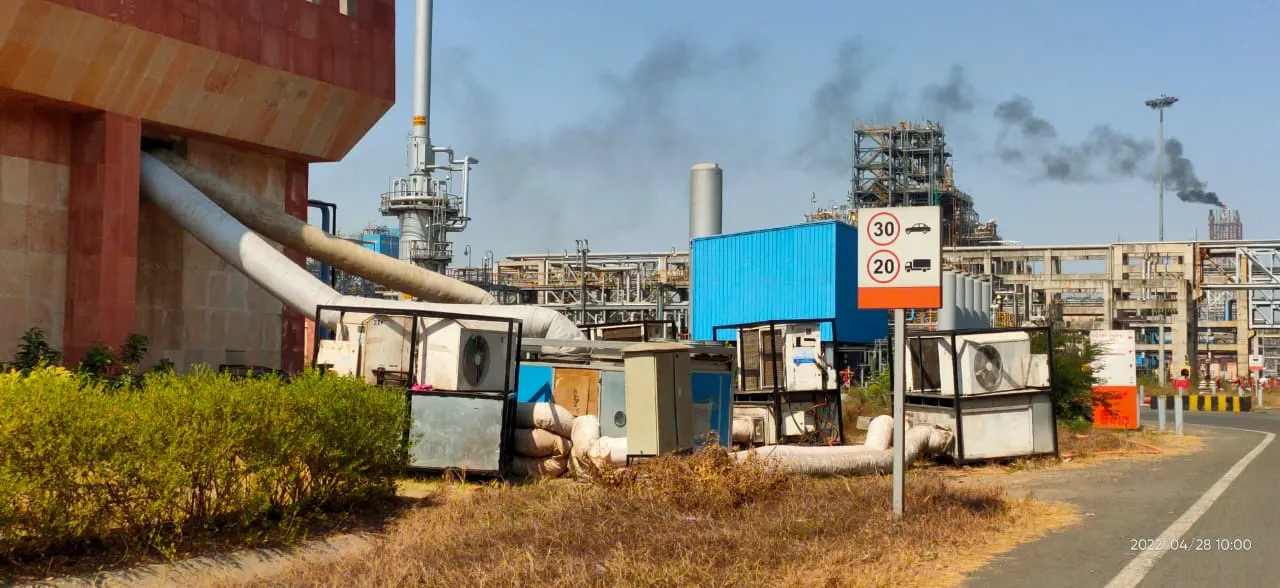How Things Work: Tyre Grip [VIDEO]
[ad_1]
On this episode of How Things Work, we choose a basic seem at how car or truck tyres achieve and retain their grip and what things affect that grip.
Approximated reading through time: 6 minutes, 43 seconds.
If you cannot watch the online video, you can read the online video transcription below:
Edited for clarity and readability
Welcome to this week’s episode of How Points Operate. And in the future two segments, we are going to be looking at how tyres attain their grip and, to add a twist to the topic, we are going to be comparing automobile and bicycle tyres and how they accomplish grip in totally diverse ways. So to start with let’s have a search at motor vehicle tyres. The key difference among a auto and a bike tyre is that a car tyre does pretty tiny leaning. The other noticeable variation is that a motor vehicle with 4 tyres suffers from weight transfer, which loads and unloads the several tyres in another way at the exact time.
What influences the available grip on a car or truck tyre? Perfectly, aside from the style of tyre and the tread we have on it, downforce, excess weight, and road surfaces, there are dynamic forces that act on a tyre which impact the quantity of remaining grip we have and the very best way to illustrate this is with Kamm’s Circle.
So as we can see with Kamm’s Circle, we can illustrate longitudinal forces, so braking and acceleration, and then our lateral forces, which occurred owing to our steering. So if the diameter of the circle represents the utmost grip ranges that we have in our tyres, and let’s say that is expressed as 10, if we do braking, for example, just by itself, we may well generate a longitudinal pressure of seven out of 10. But you can nevertheless see that that is nicely within just our grip ranges or, we may well accelerate with a pressure equal to 7 out of 10 and we nonetheless have grip degrees. Nonetheless, if we brake and steer at the similar time, so let us say we steer with the lateral force of seven out of 10, we brake with the lateral pressure of 7 out of 10, the resultant force involving people two vectors will put us exterior the overall grip levels that are out there in our tyres, and that is wherever we reduce grip.
So it is essential that we understand how the different hundreds acting on our tyres when we are accelerating, braking, and steering will impact all round grip. Now that we know how the lateral and longitudinal forces use up the grip, we now will need to look at that the within wheels journey a shorter distance relative to the exterior wheels when cornering and how this impacts our steering grip. We know intuitively, that simply because the inside of and outside the house wheels switch via distinctive radii, just one of the tyres has to slip and a whole lot of design and style do the job has been done to lower the effects of the wheel slip with models, this sort of as the Akermann steering, which is a specific geometric design of the steering linkages aligned for the entrance wheels to pivot at a little bit various angles when turning.
But here is the intriguing portion. We however require a minimal slip to get some grip, not as well much mainly because which is a skid. (I’m a poet and I do not know it.) But for this to make sense, we 1st need to have to make clear that there is a distinction in between friction and traction. So, friction is a pressure that develops amongst your tyres and the highway, and it can be static or kinetic. You can not see it, but you can truly feel it and notice its influence on your driving. That said, friction can effects your complete car’s managing. Traction specially describes the form of friction that develops between your tyres and the road. Without having traction, your car or truck won’t be able to produce tyre grip with the road and you can rapidly reduce control of your car or truck. However, offered the style and construction of our tyres, there is often a little motion among the tyre and the area, which occurs, in particular as the tread blocks settle, as they make contact with the highway.
On prime of that, the carcass of the tyre itself twists when we change the steering wheel and this will cause the centre of the tyre to be misaligned relative to the primary and uncommon edge of the tyre, which leads to slippage to occur. You can see that combined with our Akermann steering angle, we have a whole lot of motion among the speak to patches of the tyre and the surfaces of the road. But as prolonged as the motion is not more than the traction the tyre generates, we are going to be able to preserve regulate of the car or truck and not drop grip. A key obstacle we deal with of class, are the many conditions less than which we generate our vehicles. In between wet and dry surfaces, contaminants on the street and various street surfaces, our lousy tyres need to cope with all these ailments. And this is why all passenger cars have tread styles. Now there is certainly a lot of a debate that have taken spot about tyre treads, but just before receiving into the aspects, remember that there are various forms of tyres, whose condition and tread are dependent on the task that they are required to accomplish.
So you are going to observe that with a functionality tyre, it’s generally a square tyre, which helps with a crisp convert into the corner. It also attempts to maximise grip with tiny emphasis on displacing drinking water. While moist weather conditions tyres use an even softer rubber compound than general performance tyres, to produce as substantially mechanical grip as probable. They also have more siping to displace as a lot water as attainable, which any person who has slipped on a soaked ground donning slops, will surely enjoy. All weather conditions tyres are what you commonly uncover on most production cars and trucks. They are made to be a compromise concerning grip and overall performance, longevity, sound, moist weather, and protection. For improved tyre lifestyle, they’re created up with an even harder rubber compound which sacrifices outright grip and cornering efficiency. The tread block structure is normally a compromise between tranquil functioning and drinking water dispersion. So the tyres must not be as well noisy in standard situations, but need to operate fairly well in downpours and on damp streets.
All terrain tyres are typically utilised on SUVs and bakkies. They are substantially bigger tyres with stiffer sidewalls and even bigger tread block designs. The much larger tread blocks imply the tyres are really noisy on normal roadways, but grip free sand and dirt really effectively with almost a gear interlocking style of course of action to create grip. As very well as being noisier, the greater tread block sample usually means less tyre surface area in speak to with a easy street floor like tar. The rubber compound utilised in these tyres is commonly center of the roadways, so neither delicate, nor tricky. And at the serious stop of the all terrain tyre classification are mud tyres and these have massive, tremendous chunky tread blocks, and definitely should not ever be pushed any where else other than on unfastened mud and grime. And the tread sometimes doesn’t even occur out in blocks any longer, but it seems to be more like paddles designed into the tyre carcass. So you assumed the tread was the shape of the rubber blocks about the exterior of your tyre, did not you?
Effectively, it is, but it is also, as you can see, so substantially far more. The proper decision of tread structure for a particular application can mean the variance between a snug, silent ride, and a tyre that leaves you feeling exhausted anytime you get out of your vehicle. A appropriate tread style and design increases traction, enhances managing, and will increase durability. It also has a direct effect on the suitable consolation, sound level and gas effectiveness of the tyre. We also want to keep in thoughts the relevance of appropriate tyre pressures to suit the disorders. Correct tyre pressures be certain the composition of the tyre and the consequential grip it supplies, is retained. And strain also influences the heating and cooling of the tyre, which also impacts on how the tyre compound offers grip.
So which is a primary seem on how vehicle tyres attain and retain their grip. Up coming week, we’ll make the comparison with bicycle tyres and I can’t hold out, mainly because the way bike tyres build grip is a intriguing strategy to say the least. So we glance forward to observing you then.
To check out the total episode, take a look at: https://www.facebook.com/observe/LetsTalkAutomotive/
Want to know when the future episode is obtainable? Signal up to get notifications straight into your inbox.
[ad_2]
Resource url






